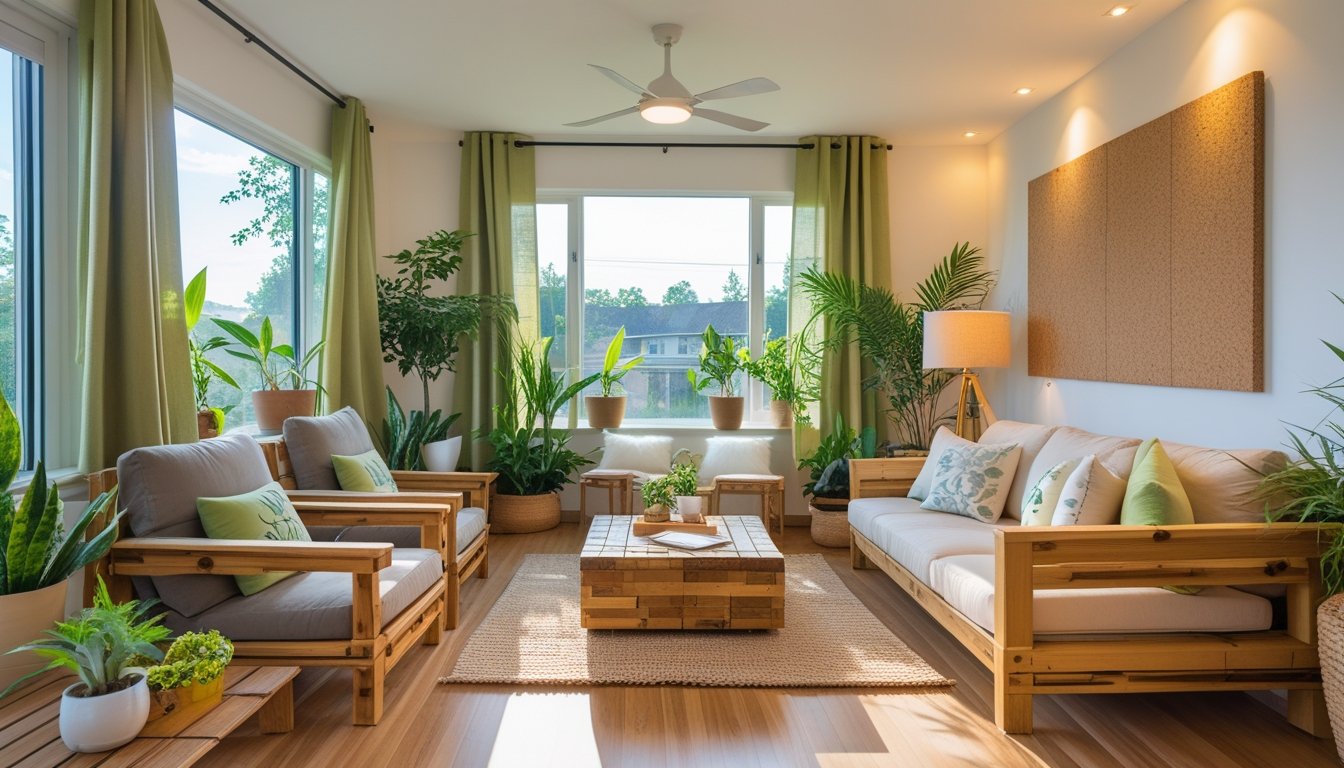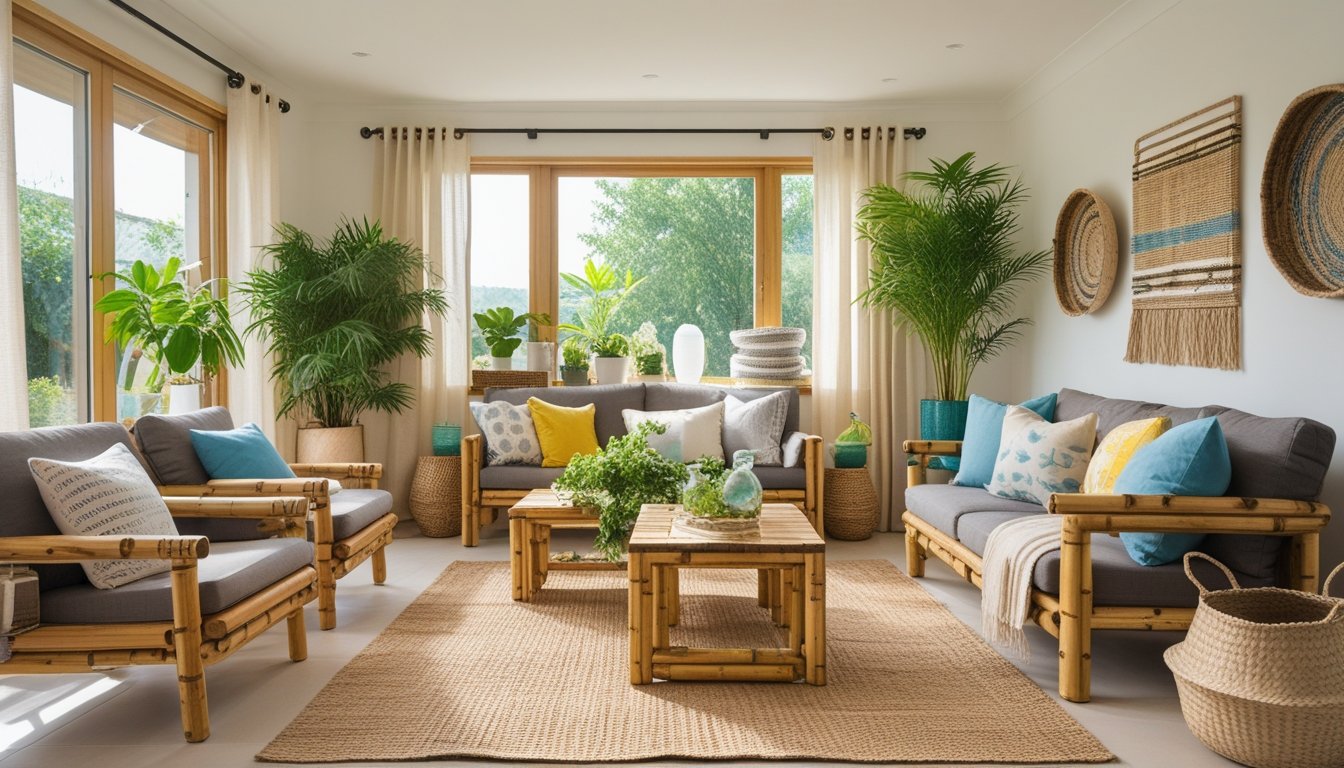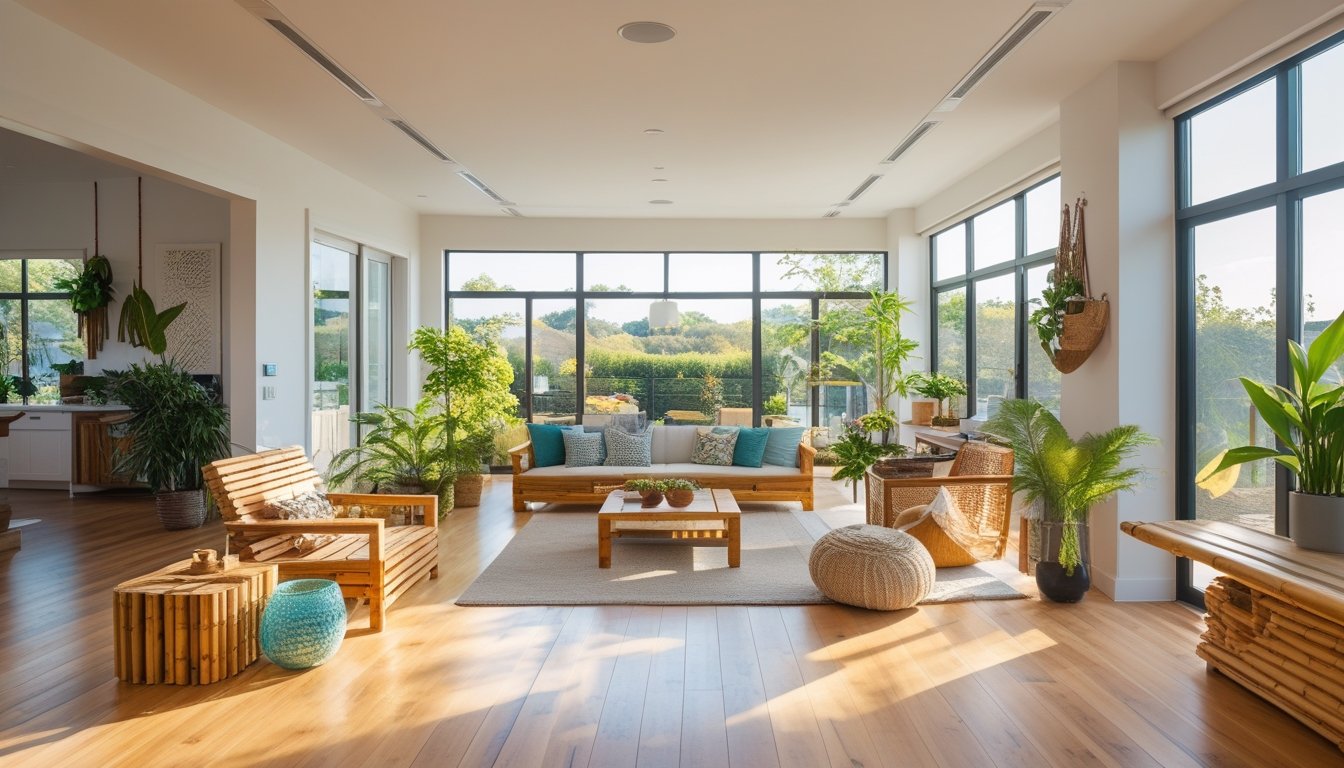Late updated: 19 Jul 2025 10:07
Written by: Daniel Harper
Creative Ways To Utilise Sustainable Home Materials: Enhance Your Eco-Friendly Living
In an age where sustainability is increasingly vital, our homes can become a sanctuary of eco-friendly innovation. By integrating sustainable materials creatively, we not only reduce our environmental footprint but can also enhance the aesthetic appeal of our living spaces. Reclaimed wood and recycled metals, for example, provide unique textures and character to home interiors, showcasing beauty that's both timeless and responsibly sourced.

Our approach extends beyond just aesthetics. Embracing sustainable materials often involves inventive techniques that blend functionality with style. Whether it's using recycled glass and metals for fixtures and decorative accents or incorporating natural fabrics into the decor, the possibilities are vast and exciting. Utilizing these materials doesn't just support the environment; it transforms living spaces into personal expressions of sustainability.
The benefits of such choices are tangible and far-reaching. We explore each method with a focus on practicality and style, ensuring that adopting a sustainable home journey is as accessible as it is rewarding. As we delve into sustainable design options, we offer insights to help you make informed decisions that reflect your values.
Key Takeaways
- Sustainable materials enhance home aesthetics and reduce environmental impact.
- Creative designs combine functionality and responsible material use.
- Eco-friendly choices support personal expression and value alignment.
Fundamental Concepts Of Sustainable Home Materials
Understanding sustainable home materials involves recognising their importance in reducing environmental impact and enhancing energy efficiency. Our focus includes the benefits these materials provide and their distinct characteristics.
Benefits Of Utilising Eco-Conscious Building Materials
The use of eco-conscious materials in home construction offers several benefits. Primarily, these materials contribute to reducing the carbon footprint. For instance, materials such as reclaimed wood and recycled metals not only reduce waste but also minimise the need for virgin resources. By choosing sustainable materials, we lessen the demand on natural resources and encourage the recycling and reusing of existing materials.
Additionally, sustainable materials often enhance energy efficiency. They can be utilised in designs that improve insulation and reduce energy consumption for heating and cooling. This results in cost savings over time, making them financially beneficial. Furthermore, homes built with eco-friendly materials contribute to a healthier living environment, as they tend to be non-toxic and promote better indoor air quality. These materials often last longer and perform better than conventional alternatives, making them a preferred choice for green construction.
Key Features Of Sustainable Materials For Homes
Sustainable materials possess several key features that distinguish them from conventional options. Recyclability and renewability are common characteristics found in materials such as bamboo, which grows rapidly and regenerates quickly. These materials often originate from sources that are managed responsibly, ensuring the long-term availability of resources.
Another key feature is durability. Sustainable materials are designed to withstand time and usage, providing long-lasting solutions that do not need frequent replacement. Energy efficiency is also a critical aspect, often enhanced through materials that improve thermal performance such as insulated concrete forms or eco-friendly roofing solutions.
Sustainable materials are often locally sourced, which reduces transportation emissions and supports regional economies. By opting for these materials, our homes are not only constructed responsibly but also contribute to a broader movement towards sustainable living.
Creative Applications Of Eco-Friendly Materials In The Home

By integrating eco-friendly materials, we can create spaces that are not only sustainable but also filled with unique charm. Through innovative design and a commitment to sustainability, these materials offer creative solutions for environmentally-conscious living.
Repurposing And Upcycling: From Reclaimed Wood To Cork
Repurposing materials breathe new life into our homes, reducing waste and adding character. Reclaimed wood, once discarded, can transform into stunning tables or accent walls. Each piece tells a story, rich with history.
Cork offers a versatile option, used both as a flooring material and a stylish wall covering. Lightweight and resilient, it brings a natural element indoors, maintaining warmth and comfort. To explore further, we can also consider mycelium, a fungal-based material that grows in custom shapes and is biodegradable, making it ideal for creating furniture.
Innovative Sustainable Flooring Options
Many of us seek sustainable alternatives that are both functional and elegant. Bamboo flooring stands out with its rapid renewal rate and natural aesthetic. Its durability rivals traditional hardwood, offering a stylish and eco-conscious choice.
Alternatively, hempcrete offers insulation and thermal properties, applied not just on walls but in innovative flooring designs. It balances temperature, enhancing energy efficiency. Consider also the earthy texture of rammed earth and the insulating properties of straw bales, which contribute to comfortable, eco-friendly flooring with significant thermal mass properties.
Harnessing Solar And Renewable Energy Elements
Embracing renewable energy, solar tiles blend seamlessly into our roofs. They harness solar energy efficiently while maintaining architectural aesthetics. This technology reduces energy bills, all while generating clean power.
Incorporating recycled materials, such as recycled steel contributes structurally to energy-efficient homes. Recycled steel is strong and sustainable, making it an ideal choice for home infrastructure. In combination, these elements work towards achieving carbon-negative material status, ultimately enhancing energy-efficient construction while reducing our environmental footprint.
Frequently Asked Questions

Incorporating sustainable materials in home design involves creativity and practicality. Innovative repurposing and selection of eco-friendly resources are key elements.
What are some innovative ways to repurpose materials for eco-friendly home design?
Repurposing materials for home design can be a creative venture. Old wooden pallets can be transformed into rustic furniture. Using reclaimed wood for flooring adds a unique touch. Repurposing glass bottles as decorative lights can add charm while reducing waste.
Which eco-friendly building materials can be used for constructing sustainable houses?
Several eco-friendly materials are excellent for sustainable house construction. Bamboo is not only sustainable but also sturdy. Recycled steel is commonly used in framing. Solar tiles offer a renewable energy source. Cork and reclaimed wood are great for insulation and flooring.
How can existing materials in a home be adapted to enhance sustainability?
Existing materials can be adapted in various ways to boost sustainability. Upgrading to energy-efficient windows reduces energy consumption. Repainting walls with non-toxic paints made from natural ingredients can improve air quality. Reusing bricks from previous construction for new projects minimises waste.
What are the key elements to consider when designing a sustainable home?
Designing a sustainable home involves several crucial elements. Energy efficiency is vital, incorporating solar panels and smart home technology. Water conservation can be achieved with rainwater harvesting systems. Material selection should focus on recyclability and durability.
Can you list some examples of sustainable house designs that utilise eco-friendly materials effectively?
There are several inspirational examples of sustainable house designs. Homes made from shipping containers showcase versatility and reusability. Earthships, constructed with natural and recycled materials, focus on self-sufficiency and minimal environmental impact.
What are the best practices for integrating eco-friendly materials into school project models?
Integrating eco-friendly materials into school projects can be both educational and fun. Using cardboard and recycled paper for models is a simple start. Incorporate natural elements like twigs and leaves for detailing. Encourage the use of plant-based glues and natural dyes for decoration.
